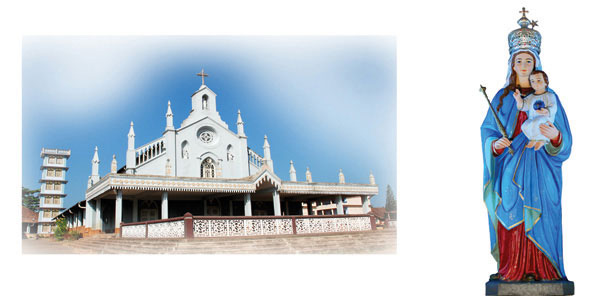

Centenary Special: Historical background of the Foundation of Our Lady of Health Church, Shirva
Compiled by Dr. Eugene DSouza, Moodubelle
Bellevision Media Network
Udupi, 27 Jan 2015: As the Church dedicated to Our Lady of Health at Shirva-the Mother Parish of Belle, Mudarangadi, Shankerpura, Pernal, Pamboor, Kalatthur and Yermal, completes a century of its inauguration and blessing by the then Bishop of Mangalore, Most Rev. Paul Perini on 9 February 1915, it would be interesting to know the historical background of the foundation of the church.
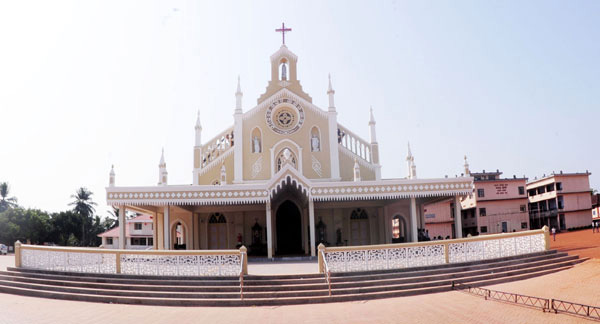
The origin of Christianity in South Kanara comprising of the present districts of Udupi and Dakshina Kannada can be traced since around 1500. Following the discovery of the sea route from Europe to India by the Portuguese adventurer-Vasco da Gama, the Portuguese established their political control over Goa and carried on converting the indigenous people.
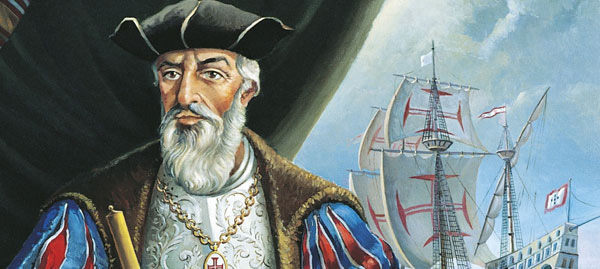
Vasco da Gama
St. Francis Xavier was chiefly responsible for converting a large number of local people to Christianity. The Portuguese built a number of churches in Goa including the Bom Jesus Church at Old Goa. However, quite a number of newly converted Christians gradually migrated from various places in Goa to the south between 1500 and 1763 due to political, economic and cultural reasons. These immigrant Christians from Goa who settled down in different villages of South Kanara came to be known as ‘Konkani Christians’.

St. Francis Xavier
One of the prominent reasons for the migration of Konkani Christians to South Kanara was the oppressive character of the ‘Edict of Goa Inquisition’. The Portuguese authorities, both political and religious, wanted to eliminate all traces of paganism in the customs and manners of the native Christians with particular reference to birth, death, festivals and dress. This created a sense of fear and insecurity in the minds of the native Christians. Though they embraced Christianity, the native people wanted to preserve their native culture and thus, they migrated to the Kanara region and settled down at different places.
The rulers of Vijayanagara and the Nayaks of Keladi encouraged Konkani Christian migration because they were a useful group in the economic set up of the region. Konkani Christians came to South Kanara during this period as artisans, merchants, cultivators and even for the propagation of faith. Agricultural land was available in South Kanara in sufficient quantity for cultivation. Gradually, Konkani Christians learnt Kannada and Tulu, but retained Konkani as their mother tongue. They built churches, organized parishes, started industries and warehouses in the region to promote socio- economic development in their own way.
Tradition confirms that Churches were founded at different places in South Kanara few centuries back including the one at Shirva. Though it is not easy to say exactly when the first church was built in Shirva, it is certain that till 1911 two churches existed in Shirva-the Lower Church and the Upper Church. In the absence of documents, it is difficult to pinpoint which of them was built earlier.
According to generally held belief, the Lower Church dedicated to N. S. de Saude (Our Lady of Health) was built earlier. It has been commonly believed that this church was located originally in Kodi on Shirva Katapady Road.
The Nayaks of Bedanore, especially during the days of Venkappa Nayak (1586- 1630) brought the whole of the west coast under their jurisdiction and laid solid foundation for a strong government. As Christians were good agriculturists, the Nayaks encouraged them in their territory. This resulted in the spread of Christianity from the coastal area to the hinterland and in the building of a number of churches. Thus, it can be presumed that that the Church at Kodi was constructed at this period. Another tradition says that a Church existed at Mannettu on the border of Shirva and Kuthyar village at the end of the seventeenth century.
The Kanara Konkani Christians faced the worst phase in their history when they became the victims of the persecution of Tipu Sultan (1761-1799) who became the ruler of Mysore following the death of his father-Hyder Ali. Christians were persecuted on the suspicion of their being the supporters of the British who were emerging as a political power in India. Tipu Sultan’s soldiers destroyed many of the churches in Kanara including those at Kodi and Manettu in Shirva. Between 1783 and 1785 thousands of Kanara Christians including from Shirva and neighbouring regions were taken as captives to Seringapatam, the capital of Tipu Sultan where they were tortured and subjected to hardships.
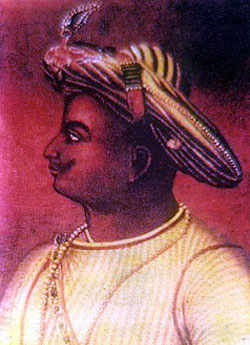
Tipu Sultan
Following the final defeat and death of Tipu Sultan in the Fourth Anglo-Mysore War in 1799, Konkani Christians were liberated from the captivity and those who had survived returned to their homes in South Kanara and were allowed to settle on their land. Gradually, Christians began to rebuild their churches and organise themselves into parishes.
Before 1815 as many 23 Churches, including four in the Mulki Varado were rebuilt. Before Tipu destroyed the churches there were four churches including the Saude Church of Shirva in Mulki Varado. It is presumed that the Saude Church of Shirva was also rebuilt before this period. However, it was shifted from its original location at Kodi to a new place known as Hale Hithlu where the present Mahalaxmi Narayani Temple is situated.
The place where the church dedicated to Our Lady of Health stood was a gift from a well-to do Bunt family. The ancestors of late Chandayya Hegde’s famous Kodu Household had no girl child in their family. The family offered to donate a piece of land to the Saude Church if a girl child was born in their family. It is believed that God heard their prayer made through Our Lady of Health and blessed them with a girl child. In gratitude for the gift of a girl child, the Kodu Bunt family donated the land for the church as they had promised. Even now this area is called as Old Church area.
Meanwhile, a new church dedicated to St. Francis Xavier was built by Fr. Joachim Borges in 1859 located at the present cemetery of the Shirva parish. Thus, there were two churches in Shirva, the one dedicated to Our Lady of Health came to be known as the Lower Church and the one that was dedicated to St. Francis Xavier, the Upper Church.
It was a period of differences and conflict between two church authorities known as ‘Padroado’ and ‘Propaganda’. In 1514 Padroado, that is, State Patronage system was introduced in Goa and in 1534 Goa became an independent diocese having jurisdiction over a vast territory including the whole of Kanara. In 1632, the Sacred Congregation for the Propagation of Faith, popularly known as ‘Propaganda’ was established by Pope Clement X who appointed Thomas De Castro as the honorary bishop of Fulsivila and Vicar Apostolic of Kanara in 1674 under the Propaganda system which the Portuguese refused to recognize. Thus, there was a conflict between Padroado and Propaganda.
As Kanara came under the control of the British following the defeat and death of Tipu Sultan in 1799, the Vatican decided to take advantage of the situation and Pope Gregory XVI abolished the Padroado system outside the Portuguese territories in India and extended the Propaganda system in these territories and Apostolic Vicariates were established.
In 1836, Catholics in the Kanara region were advised to transfer their allegiance to the Vicar Apostolic of Verapoly in Kerala as there was no legitimate bishop in Goa as the bishop nominated by the Portuguese government was not acceptable to the Vatican. Many priests with their parishioners followed this advice but others refused, resulting in rift among a number of priests and their parishioners.
Even in Shirva, while the church dedicated to Our Lady of Health (Lower Church) was under the control of Padroado of Goa, the church dedicated to St. Francis Xavier (Upper Church) was under the Propaganda affiliated to the Bishop of Verapoly in Kerala. Thus, the two churches had their own jurisdiction and the division among the Catholics seemed to be unbridgeable. The priests and people of both these churches tried their best to win the supporters to their side. The fact that for a long time the people of the same religion fought with each other regarding the spiritual jurisdiction of the two bishops was really sad.
Meanwhile, Kanara was established as an independent Vicariate under Bishop Michael Anthony (OCD) in 1853. In 1886 the Vicariate was raised to the status of a Diocese and the Vicar Apostolic of Mangalore, Most Rev. Nicholas Maria Pagani S.J. became the first Bishop of Mangalore.
Due to lack of proper records, it is not possible to reconstruct the complete history of the two churches in Shirva. As per the available documents, Fr. H. S. Miranda was the parish priest of the Lower Church from 1872 to 1876. He was succeeded by Fr. Francis Xavier Alemco from 1876 to 1879 and from 1879 to 1901 Fr. Gregory Anthony Menezes worked as the parish priest.
As mentioned above, it was Fr. Joachim Borges who built the church dedicated to St. Francis Xavier also known as the Upper Church. He was succeeded by Fr. Louis Noronha as the parish priest from 1872 to 1874. The later parish priests were-Fr. Manuel D’Souza and Fr. Nicholas Cornelio who was the parish priest from 1885 till 1904. He was quite influential and forward looking priest and acquired many acres of land from the government practically free of cost. Fr. Nicholas Cornelio was the contemporary of Fr. Gregory Anthony Menezes, the parish priest of the Lower Church.
At that time there were no churches in Belle, Shankerapura and Mudarangadi. Catholics from these regions had to go to Shirva to attend Sunday masses and for other religious obligations.
On 4 March 1901, Fr. Gregory Anthony Menezes passed away and he was succeeded by Fr. Sebastian Furtado. Following the transfer of Fr. Furtado, his place was taken by Fr. Gregory D’Souza. Meanwhile, in the Upper Church, Fr. Nicholas Cornelio was succeeded by Fr. Rosario Lewis in 1904. He started the post office and a weekly market at Shirva. He also initiated the process for the unification of the Upper and Lower Churches. In 1906, Fr. Rosario Lewis was succeeded by Fr. Casmir Fernandes as the parish priest of the Upper Church. Thus, the Catholics of Shirva were divided into two groups and there was a need to bring these two rival groups under one church and parish in order to foster unity and solidarity among them.
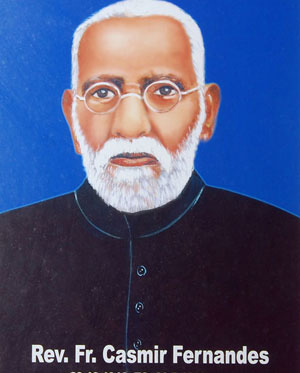
It was during the tenure of Fr. Gregory D’Souza and Fr. Casmir Fernandes as the parish priests of the Lower and Upper Churches respectively that a serious attempt was made for the unification of both the churches. Both these priests being broadminded decided to work together to bring about the unification of both these parishes which were hardly two furlongs apart. Thus, both Fr. D’Souza and Fr. Fernandes worked out measures to unify these two churches into one parish.
The proposed solution as visualised by Fr. Gregory D’Souza and Fr. Casmir Fernandes to the age old problem comprised constitution of a united parish under the church dedicated to Our Lady of Health (Lower Church), cancellation of the Upper Church dedicated to St. Francis Xavier and raising the chapel at Belle into a full-fledged parish dedicated to St. Lawrence and transferring the religious articles from the Upper Church to that of Belle.
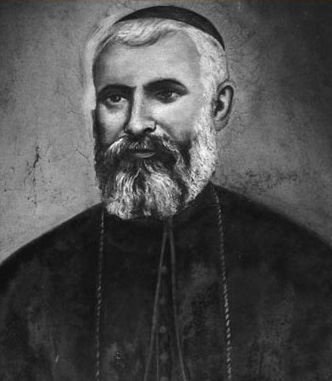
Bishop Paul Perini
As per the decision taken by the ‘zuntha’, both the Lower and Upper churches at Shirva were pulled down and the foundation for the new church dedicated to Our Lady of Health at the present location was laid on 9 November 1911 by Bishop Paul Perini. The chief mason of the new church was Mathias D’Silva of Katapady. The church building was completed in February 1915 and on 9 February 1915, Bishop Paul Perini blessed and inaugurated the new church.
